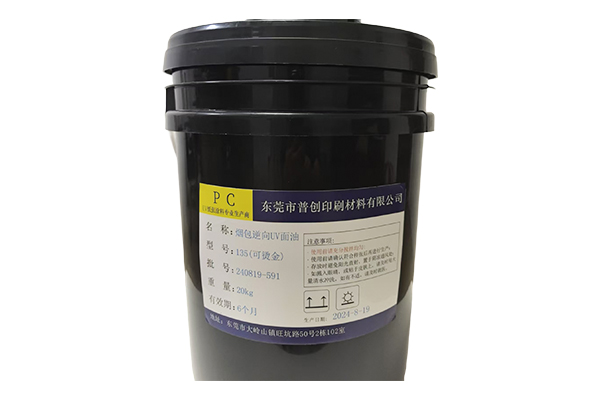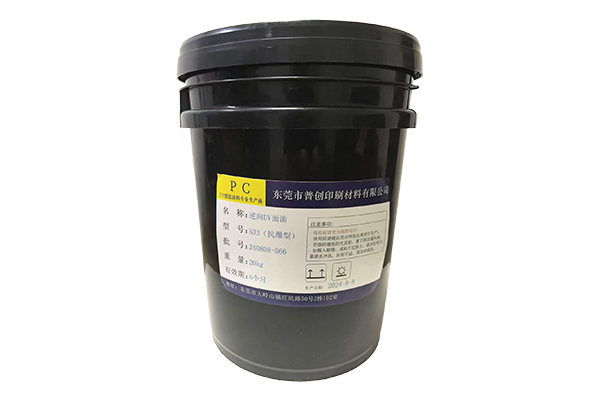How is the weather resistance of scratch-resistant FVilm UV varnish?
Release Time : 2025-03-04
In the coating industry, weather resistance is one of the important indicators to measure the performance of coatings. Especially for varnish products such as FVilm UV varnish, which are widely used in furniture, automobiles, construction and other fields, its weather resistance is directly related to the service life and appearance of the product. As a high-performance coating, the weather resistance of scratch-resistant FVilm UV varnish is particularly noteworthy.
Weather resistance mainly refers to the ability of the coating to maintain its stable physical and chemical properties under the long-term action of natural factors such as light, temperature, humidity, rain and other natural factors under outdoor environmental conditions. For FVilm UV varnish, its weather resistance is mainly reflected in the following aspects:
Ultraviolet rays are one of the main factors affecting the weather resistance of coatings. Long-term exposure to sunlight will cause the resin in the coating to degrade, resulting in lighter color, loss of gloss, and even cracking and peeling. However, by adding ultraviolet absorbers, FVilm UV varnish can effectively absorb ultraviolet rays and convert them into heat energy to dissipate, thereby reducing damage to the coating. This UV resistance allows FVilm UV varnish to maintain its bright colors and gloss for a long time in outdoor environments.
Temperature changes are also an important factor affecting the weather resistance of coatings. In hot summer, the surface temperature of objects may rise sharply, while in cold winter, the temperature may drop sharply. Such drastic temperature changes will cause the coating to expand and contract, which may cause cracks and peeling in the long run. FVilm UV varnish optimizes its resin formula and curing process to make the coating have good thermal stability and maintain its performance under different temperature conditions.
Moisture and rain are also factors that cannot be ignored in affecting the weather resistance of coatings. If the coating is not waterproof, moisture and rain will penetrate under the coating and react with the substrate, causing the coating to blister and rust. FVilm UV varnish adds special additives to form a dense protective film that effectively prevents the intrusion of water, thereby improving the moisture resistance and water resistance of the coating.
In addition to the above natural factors, the coating may also be corroded by chemicals. For example, pollutants in the atmosphere, such as dust and chemicals, may adhere to the surface of the paint and react chemically with it, causing the paint to lose gloss, discolor or even fall off. FVilm UV varnish uses high-performance resins and additives to give the paint good chemical corrosion resistance, which can maintain its appearance and performance stability under harsh environmental conditions.
In summary, scratch-resistant FVilm UV varnish performs well in weather resistance, and can resist the erosion of ultraviolet rays, temperature changes, moisture and rain, and chemicals, maintaining its appearance and performance stability. This makes FVilm UV varnish one of the preferred coatings in many fields, providing a strong guarantee for the beauty and durability of the product.
Weather resistance mainly refers to the ability of the coating to maintain its stable physical and chemical properties under the long-term action of natural factors such as light, temperature, humidity, rain and other natural factors under outdoor environmental conditions. For FVilm UV varnish, its weather resistance is mainly reflected in the following aspects:
Ultraviolet rays are one of the main factors affecting the weather resistance of coatings. Long-term exposure to sunlight will cause the resin in the coating to degrade, resulting in lighter color, loss of gloss, and even cracking and peeling. However, by adding ultraviolet absorbers, FVilm UV varnish can effectively absorb ultraviolet rays and convert them into heat energy to dissipate, thereby reducing damage to the coating. This UV resistance allows FVilm UV varnish to maintain its bright colors and gloss for a long time in outdoor environments.
Temperature changes are also an important factor affecting the weather resistance of coatings. In hot summer, the surface temperature of objects may rise sharply, while in cold winter, the temperature may drop sharply. Such drastic temperature changes will cause the coating to expand and contract, which may cause cracks and peeling in the long run. FVilm UV varnish optimizes its resin formula and curing process to make the coating have good thermal stability and maintain its performance under different temperature conditions.
Moisture and rain are also factors that cannot be ignored in affecting the weather resistance of coatings. If the coating is not waterproof, moisture and rain will penetrate under the coating and react with the substrate, causing the coating to blister and rust. FVilm UV varnish adds special additives to form a dense protective film that effectively prevents the intrusion of water, thereby improving the moisture resistance and water resistance of the coating.
In addition to the above natural factors, the coating may also be corroded by chemicals. For example, pollutants in the atmosphere, such as dust and chemicals, may adhere to the surface of the paint and react chemically with it, causing the paint to lose gloss, discolor or even fall off. FVilm UV varnish uses high-performance resins and additives to give the paint good chemical corrosion resistance, which can maintain its appearance and performance stability under harsh environmental conditions.
In summary, scratch-resistant FVilm UV varnish performs well in weather resistance, and can resist the erosion of ultraviolet rays, temperature changes, moisture and rain, and chemicals, maintaining its appearance and performance stability. This makes FVilm UV varnish one of the preferred coatings in many fields, providing a strong guarantee for the beauty and durability of the product.






